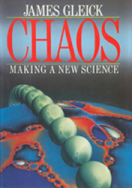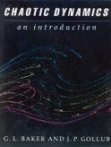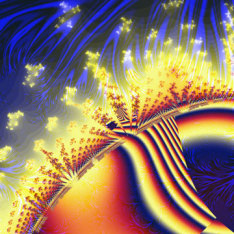About HON 462 - Chaos and Fractals..
HON 462 - Chaos and Fractals is offered approximately every two years in the Honors program at La Salle University. I first designed and taught the course in 1990, and am now in v8.0.
Even though chaos and fractal theory can be densely mathematical, this course is not a mathematics course per se. Instead, HON 462 is a course about the ideas behind chaos and fractals, how the world is modeled mathematically, and the implications for modeling because of chaos. As a result, the course is almost as much philosophy and culture in addition to strange mathematical results and compelling graphic images...
But it was not always this way.
Year 1: 1990
Here's the course description from the 1990 syllabus:
This course is an exploration of some of the many manifestations and explanations of behavior that is considered to be 'chaotic'. The realms in which this craziness occur are numerous, spanning atmospheric modeling to disease epidemics, and, in a sense, the patterns of chaos in each are isomorphic. We will address this fact, and demonstrate that there are different degrees, or mechanisms of chaos, some of which may be qualitatively understood and even quantitatively modeled. Using a geometric approach combined with computer experiments, this course will present some of the mathematical tools just now being developed to study and understand the (seemingly) random world around us.
 At first, the course was fairly mathematical, although the level was not much beyond Calculus III. I used Derive and some old dedicated Differential Equations software to handle phase portraits and the more intense algebra that comes from problems such as finding the bifurcation points in the logistic map. For grading, I gave two semester exams, with each worth 15% of the final grade, a lab grade that was based on participation and lab reports, also worth 15%, a class preparation and participation grade worth 15% , and a term paper/project for 45%.
At first, the course was fairly mathematical, although the level was not much beyond Calculus III. I used Derive and some old dedicated Differential Equations software to handle phase portraits and the more intense algebra that comes from problems such as finding the bifurcation points in the logistic map. For grading, I gave two semester exams, with each worth 15% of the final grade, a lab grade that was based on participation and lab reports, also worth 15%, a class preparation and participation grade worth 15% , and a term paper/project for 45%.
For texts I used Chaos: Making a New Science by James Gleick, which had been published only 3 years before, and Chaotic Dynamics: an Introduction, a 1990 text by Baker & Gollub. The Baker/Gollub text was mathematical, with end-of-chapter problems. Through the semester I had the students go back and forth between Gleick's wonderful descriptions of the breakthroughs in chaos and the interesting personalities that discovered them, and the mathematics behind the discoveries.
 There was a mixture of majors in that 1990 class : mostly mathematics and computer science, but with some biology and finance or economics. This mixture of majors has held for most of the times I have taught the course, with chemistry, political science, and nursing majors also signing up occasionally. Even though all were very good students, and all had at least one semester of calculus, it was clear to me that I had done too much mathematics during the semester.
There was a mixture of majors in that 1990 class : mostly mathematics and computer science, but with some biology and finance or economics. This mixture of majors has held for most of the times I have taught the course, with chemistry, political science, and nursing majors also signing up occasionally. Even though all were very good students, and all had at least one semester of calculus, it was clear to me that I had done too much mathematics during the semester.
Year 2: 1991
I was lucky enough to teach the course again the following year. By then, with more and more science was being done using chaos theory, and software becoming available to better visualize the results of different chaotic models, and my impression and student feedback of the 1990 section, I decided to move away from the mathematics and head more in a direction of the ideas of chaos and fractals and their ramifications. Here's the course description from 1991:
This course is an exploration of the new, absolutely thriving field of 'Chaos', or, in somewhat more sobering terms, 'Non-Linear Dynamical Systems'. The approach to this subject will consist of a (non-linear) combination of empirical observations, computer simulation, and mathematical derivation, coupled with readings ranging from popularizations to original texts. Student observations, hypothesis making, and writing will be emphasized by a course grade based on participation, journal keeping, and major research paper/project. A major goal of this course is that students fully participating this semester will take with them an awareness of the new ways in which 'chaotic' analysis may be used to model real-world situations that in the past have proved intractable. It is especially hoped that this course will prepare students for further, in-depth reading into the uncountably diverse facets of chaos theory and its applications, particularly as they touch upon their specific fields of study.
 In this new approach, class participation, computer projects, and the main research project all counted in determining the final grade. I also decided to drop the Baker/Gollub text in favor of Ian Stewart's Does God Play Dice, a nice complement to the Gleick book, with some deeper mathematical ideas, but mostly an informative, provocative, and extremely well-written story of chaos in practice. I also added several original journal articles, many of which are described in either Gleick or Stewart:
In this new approach, class participation, computer projects, and the main research project all counted in determining the final grade. I also decided to drop the Baker/Gollub text in favor of Ian Stewart's Does God Play Dice, a nice complement to the Gleick book, with some deeper mathematical ideas, but mostly an informative, provocative, and extremely well-written story of chaos in practice. I also added several original journal articles, many of which are described in either Gleick or Stewart:
- "The Mathematical Universe", J. D. Barrow
- "Origins of randomness in physical systems", S. Wolfram
- "Chaos and the dynamics of biological populations", R.M. May
- "Chaos", J.P. Crutchfield, J. D. Farmer, N.H. Packard, and R. Shaw
- "Nonlinear Dynamics, chaos and complex cardiac arrhythmias", L. Glass, A.L. Goldberger, M. Courtemanche, and A. Shrier
- "Fractal Geometry: what is it, and what does it do?", B.B. Mandelbrot
- "Universal behavior in nonlinear systems", M. J. Feigenbaum
- "Deterministic nonperiodic flow", E.N. Lorenz
- "Sudden death is not chaos", A.L. Goldberger and D.R. Rigney
- "Chaos and the making of international security policy", A.M. Saperstein
With these more difficult readings, I needed to be more explicit about class participation, which ultimately led me to request personal journal keeping:
Much of this class will focus on the discussion and interpretation of assigned readings. Some of these readings, primarily the original text sources, will be quite opaque. Students will be required to keep a journal in which outlines, comments, questions, queasy feelings, and in general, personal responses to these readings are kept. [While some advice and directed questions will be given for these journal entries, it is highly encouraged that students develop their own personal journal architecture and approaches to research articles.] The journal will also be the location of any notes/work connected with outside readings or personal research into Chaos theory. The journals will be periodically reviewed, but not graded. Rather, the journals will be used as sources for class discussion: students will be regularly required to provide brief synopses based on their writings to initiate discussions.
I was very happy with the course that year , as students were able to adapt to the very difficult original source readings. In effect, they learned how to learn the necessary info from a paper not in one's specialty area.
The Latest Version: 2005
Since 1991 I have done little to change the general structure of the course. I have added readings as they have become available, and changed software packages as technology has changed, but I still maintain the 3-way split among the class participation centered on readings, computer lab participation, and a research project.
To give more structure to the readings/participation parts of the course, these are now run in two parts: as seminars in the first half of the semester, and as PowerPoint presentations in the second half. From the Fall 2005 semester version:
When readings are issued, 2-3 students will be assigned to lead the discussion on the readings at the following class. In leading this discussion, these students will prepare a brief synopsis of the readings and questions for discussion to distribute to the class. The same group will also prepare one in-class presentation that goes deeper into an aspect of chaos theory (e.g. chaos and nuclear disarmament, chaos and economics, chaos and consciousness, chaos in the intelligent design debate)
This relatively small change has produced dramatic effects on the quality of our classroom discussions. (Shades of sensitive dependence on initial conditions!)
The latest change, just introduced in the Fall 2005 version of the course, was to change the journal assignment to a blogging assignment - another seemingly small change that has produced huge results in the class dynamics. You can read more about the blog, and its reception by students and others at About the blog.
Meanwhile, the blog decision is what has lead to you reading about this course on a Squarespace-powered site. Squarespace gives me a way to host an entire site dedicated to the course, a site that easily handles the other aspects of the course, i.e. the seminar sessions , computer labs, and student projects - with a nicely-designed, easily -navigated site.
 I am done changing the course for a while. It is finally where I want it to be, because with the class organized as it is now, every semester is a totally different experience as each student brings different interests and strengths to the class. The net result is that each semester feels totally different to me - a very exciting way to teach, and to learn.
I am done changing the course for a while. It is finally where I want it to be, because with the class organized as it is now, every semester is a totally different experience as each student brings different interests and strengths to the class. The net result is that each semester feels totally different to me - a very exciting way to teach, and to learn.
Back to Chaos and Fractals Course Page

